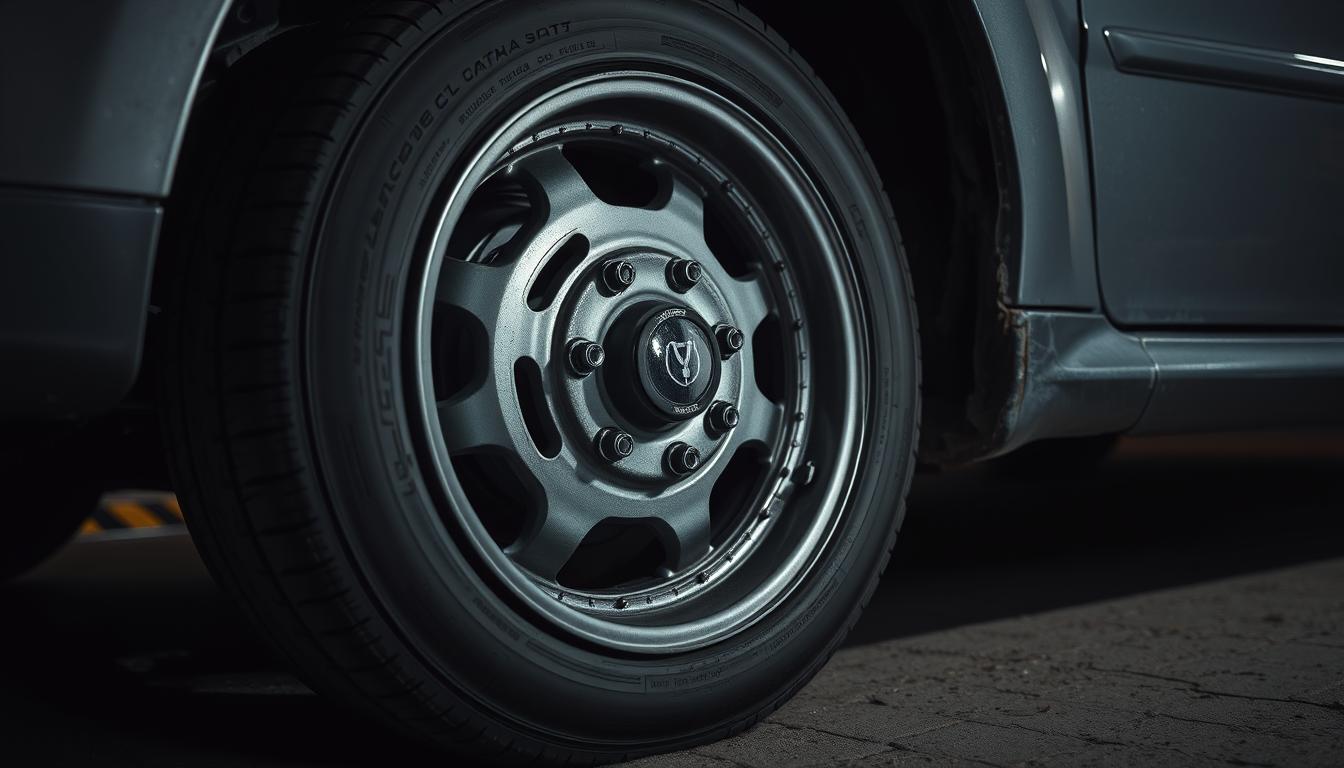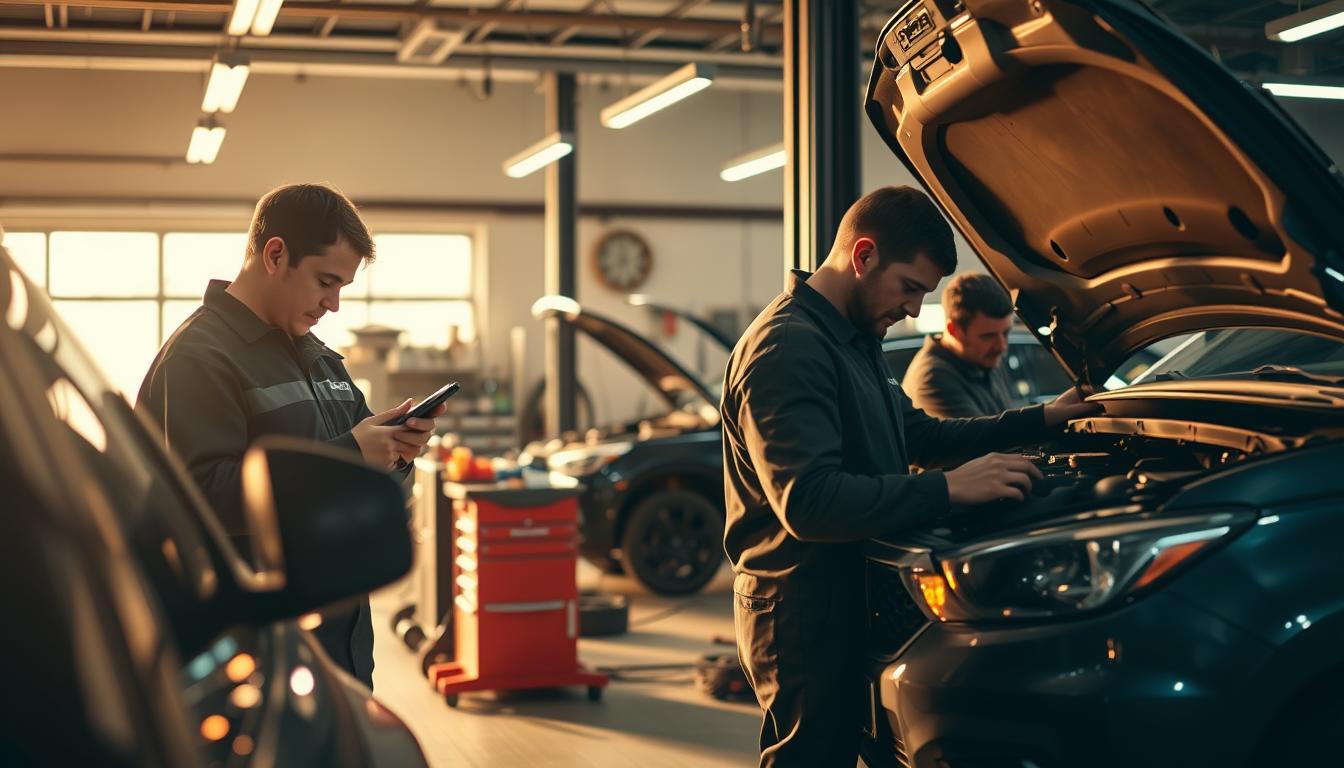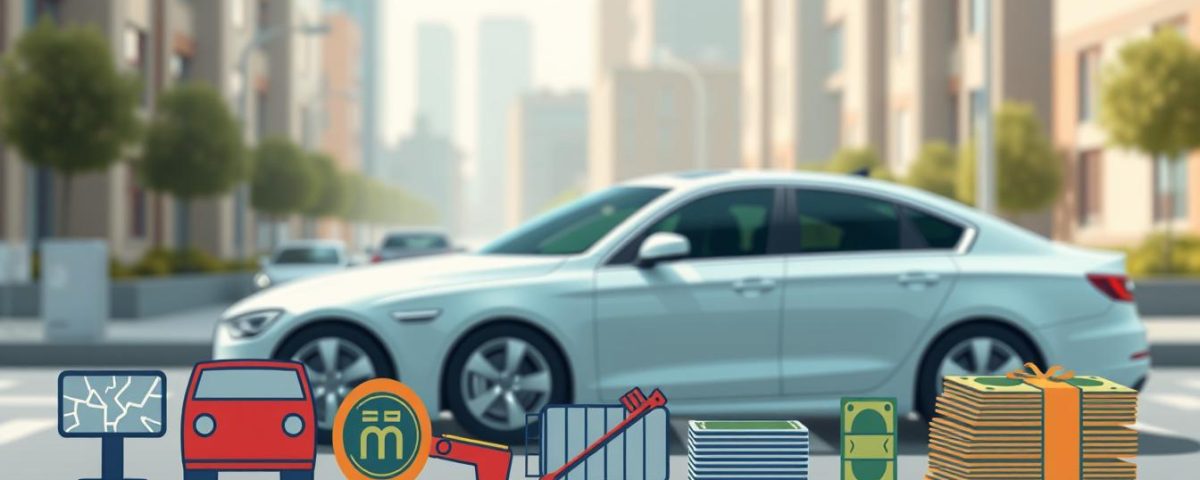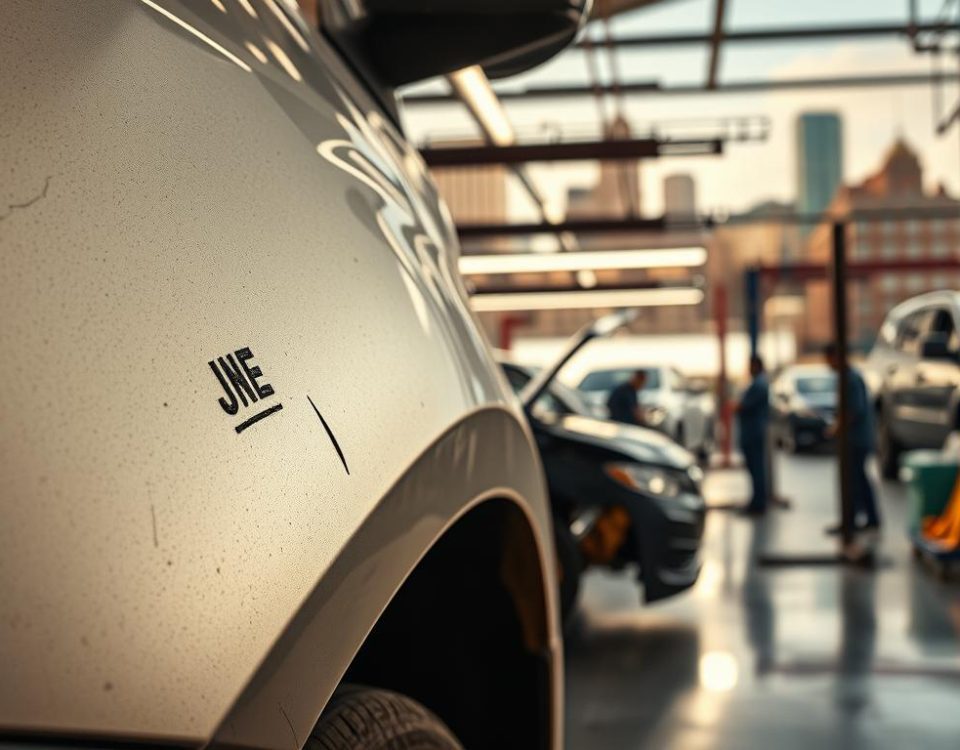
Why You Should Get a Wheel Alignment After an Auto Accident

Why Pre- and Post-Repair Inspections Are Essential for Quality Repairs
In the world of auto insurance, many myths can lead to unexpected costs. It’s important to know these myths to save money and get the right coverage. We’ll look at these myths and share tips to help you make smart choices.
We’ll cover common mistakes and important coverage details. This way, we can all make better decisions. Let’s learn how to save money together!
Key Takeaways
- Auto insurance policies vary significantly; not all are the same.
- Lower premiums can come with hidden costs.
- Your credit score can impact your insurance rate.
- The color of your car doesn’t determine its insurance cost.
- Insurance is crucial for all drivers, regardless of their driving history.
- Getting a quote doesn’t mean you’re locked into a policy.
- Understanding rental car policies is key for adequate protection.
Myth 1: All Auto Insurance Policies Are the Same
Many people think all auto insurance policies are the same. But this is not true. There are many policy types that offer different levels of protection. Knowing these differences helps us choose the right policy for us.
Understanding Policy Types
There are many policy types for different driving needs. For example:
- Liability Insurance: Covers damages to other vehicles and medical costs if we’re at fault in an accident.
- Collision Insurance: Pays for repairs to our vehicle after an accident, no matter who’s at fault.
- Comprehensive Coverage: Protects against non-collision incidents like theft, natural disasters, and vandalism.
Comparing Coverage Options
It’s important to compare insurance coverage to find the best protection for us. By looking at each policy’s unique features, we see why auto insurance diversity is key. Choosing the right coverage gives us peace of mind and can save us money in the long run.
Myth 2: Lower Premiums Mean Lower Coverage
Many think that cheaper insurance means less coverage. But this isn’t always true. Sometimes, cheaper policies have hidden costs or exclusions. This can lead to higher costs when we need to make a claim.
Hidden Costs in Cheap Policies
Looking for cheaper insurance? Be careful what you get. Here are things to watch out for:
- Deductibles: Cheaper policies might have higher deductibles. This means we pay more before insurance helps.
- Coverage Limits: Some policies have lower limits. This could leave us paying out of pocket if costs are higher.
- Exclusions: Some important coverages might be missing. This could lead to big financial problems.
Importance of Reviewing Details
Reviewing insurance policies is key to finding the right one. We need to check what’s covered and what’s not. This helps us make smart choices and avoid the trap of cheap premiums.
Myth 3: Your Credit Score Doesn’t Affect Your Rate
Many people don’t know how much their credit score affects auto insurance rates. Insurance companies really look at credit scores when setting prices. A low score means higher rates because they see it as a risk.
Knowing how credit scores work can help us get better insurance deals.
How Insurance Companies Use Credit Scores
Insurance companies use credit scores to figure out how likely you are to make claims. Studies show people with good credit scores make fewer claims. So, those with high scores get lower rates.
Here are some things that affect how insurance sees your credit score:
- Payment history
- Total debt levels
- Length of credit history
- Types of credit used
- Recent credit inquiries
Tips for Improving Your Score
Boosting your credit score can lower your insurance rates. Here are some tips to help:
- Pay bills on time: Paying on time helps your score a lot.
- Keep credit utilization low: Use less than 30% of your credit.
- Avoid opening new credit accounts lightly: Too many applications can hurt your score.
- Check your credit report for errors: Fix any mistakes right away.
- Maintain old credit accounts: Long histories are good.

Myth 4: Red Cars Cost More to Insure
Many think red cars cost more to insure. But this is just a myth. Insurers don’t care about car color when setting rates. They look at other important things instead.
The Truth About Car Color
Car color is just a personal choice. It doesn’t affect how much we pay for insurance. Insurers check things like:
- The make and model of the vehicle
- Safety ratings and crash test results
- Driver history including claims and traffic violations
These things matter more for insurance costs. Knowing this helps us choose cars wisely.
Other Factors That Affect Insurance Rates
Many things affect how much we pay for insurance. These include:
- Your driving record and experience
- Usage patterns such as mileage and purpose of driving
- Geographic location and its associated risks
By looking at these, we can find ways to lower our insurance rates. This leads to smarter money choices.
Myth 5: You Don’t Need Coverage if You’re a Safe Driver
Many people think being a safe driver means they don’t need auto insurance. But, even careful drivers can still have accidents. It’s important to know why we all need insurance.
The Risks of Skipping Insurance
Driving without insurance is risky. You could face:
- Big bills for damages in an accident.
- Legal trouble for not having insurance.
- Not being able to pay for medical costs from an accident.
Even safe drivers can’t predict everything. This shows why we all need insurance to protect ourselves.
Why Everyone Needs Coverage
Insurance is important for everyone, not just safe drivers. Here’s why:
- It gives us peace of mind by covering many risks.
- Safe drivers can still run into drivers without insurance.
- It also covers theft or damage from natural disasters.
Getting the right insurance helps keep our money and health safe. It’s key for everyone, not just careful drivers.
Myth 6: Getting a Quote Means You’re Committed
Many people think getting insurance quotes means they’re stuck. But, getting many quotes helps us see all our options. It lets us find the best policy for us without feeling trapped by a quote commitment.
How to Get Multiple Quotes
Getting the best insurance rates is easy. Just start by asking for many quotes. Here’s how:
- Use online tools to compare quotes from different companies.
- Talk to agents for quotes that fit our needs exactly.
- Ask our current provider if they can offer any discounts.
Exploring Options Freely
Looking at all our options is a big plus. Exploring options lets us:
- Find coverage that really fits our life.
- Discover discounts that can lower our costs.
- Learn more about what different insurers offer.
Getting insurance quotes without feeling stuck helps us make smart choices. We can pick the policy that’s just right for us.
Myth 7: Your Insurance Covers Rental Cars Automatically
Many people think their car insurance covers rental cars. But this is not always true. It can lead to unexpected costs and gaps in protection when we rent a car. It’s important to know what our insurance covers and what we might need more of for a rental.
Understanding Rental Car Policies
Rental car policies differ a lot between insurance companies. Some auto insurance covers rental cars like our own cars. But others might not cover everything or might have special rules. We should check our insurance policies before we rent a car. Each policy has its own rules about damage, liability, and loss.
When Extra Coverage Is Necessary
There are times when we need extra coverage for a rental car. For example, if we rent cars often or choose expensive ones. Getting extra coverage can make us feel safer. Some rental companies also offer insurance that can help fill in gaps in our own policies.
Myth 8: Only New Cars Need Full Coverage
Many think only new cars need full coverage. But, older cars also need it. The need for coverage depends on the car’s value and our money situation.
Assessing Coverage for Older Vehicles
When looking at older cars, we must think about their value and repair costs. Full coverage is good for many reasons:
- It helps avoid big repair costs.
- It gives us peace of mind.
- It lets us choose coverage based on our needs.
The Role of Collision and Comprehensive
Collision and comprehensive coverage are key for any car, old or new. Collision helps with accident repairs. Comprehensive covers theft or natural disasters. Older cars can still cost a lot to fix. Full coverage helps avoid big money surprises while driving.
Myth 9: Personal Items in Your Car Are Covered
Many people think their car insurance covers their stuff in the car. But, most policies only protect the car, not what’s inside. It’s key to know what’s covered to keep our things safe.
What Your Policy Really Covers
Auto insurance usually doesn’t cover personal items in the car. So, if something gets broken or stolen, we might not be covered. It’s vital to check our policy to know what’s included.
Protecting Your Belongings
To keep our stuff safe, we can try a few things:
- Keep items out of sight: Putting things in the trunk or hidden spots can help prevent theft.
- Use security systems: Car alarms or tracking devices can offer extra protection.
- Consider renters or homeowners insurance: These policies might cover our belongings even when they’re not at home.
By being proactive, we can protect our belongings better while driving.

Myth 10: You Can’t Change Your Insurance Mid-Term
Many think once we sign our auto insurance, we’re stuck with it. But, the truth is, mid-term changes are possible and can be good. Most insurance companies let us adjust our policies to fit our changing needs.
Flexibility in Insurance Policies
Knowing our options for policy changes is key. Our lives can change—like moving, buying a new car, or driving differently. These changes might mean we need different insurance.
Also, sometimes switching insurance can save us money or give us better coverage. Knowing about mid-term changes helps us make smart choices. It keeps us safe and saves us money.



